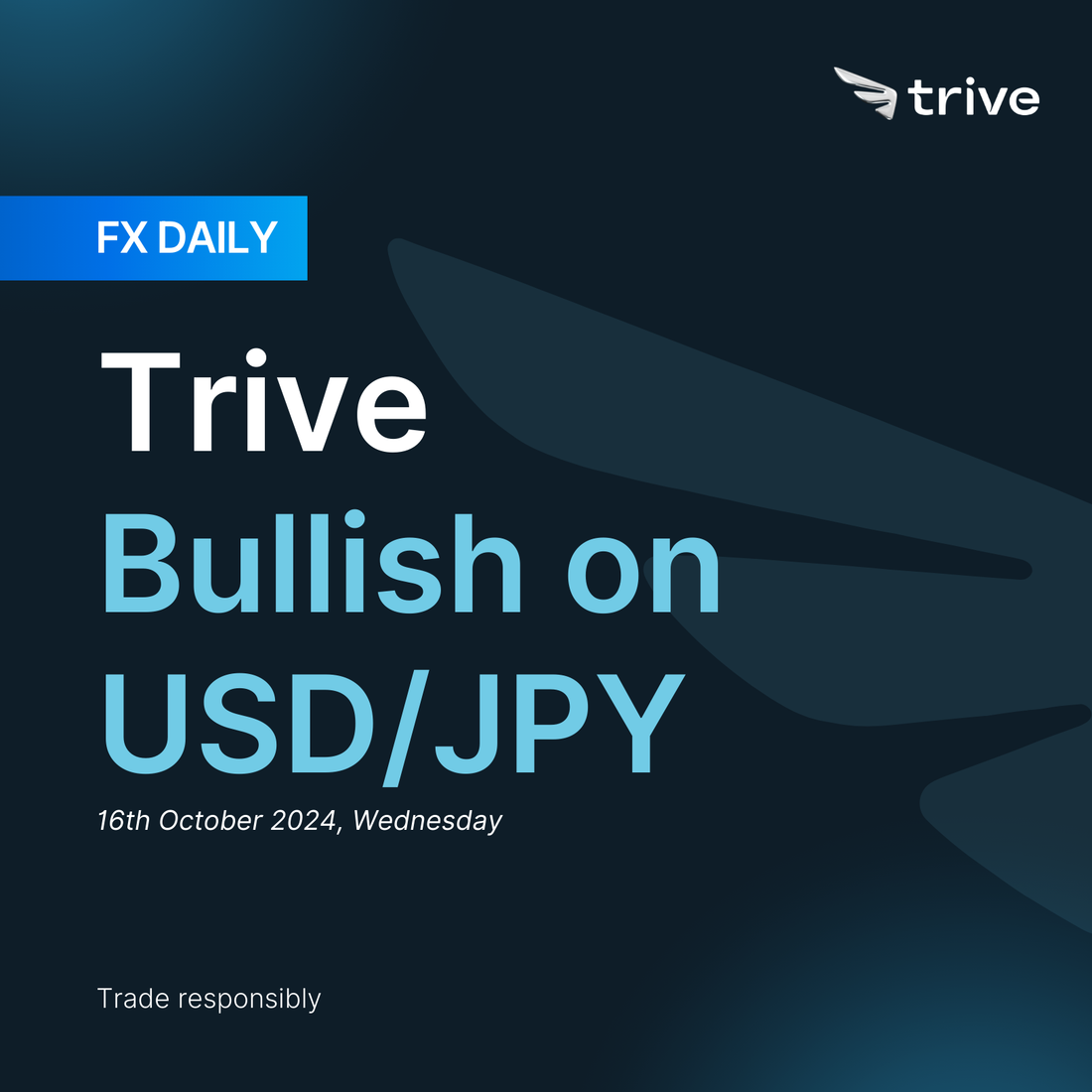FX Daily: Trive Bullish on USD/JPY

The USD remains supported as markets lower expectations for a November rate cut, driven by ongoing geopolitical risks and the approaching US election. In contrast, with no immediate plans for a rate hike and recent dovish comments from Japan's new Prime Minister and BoJ Governor Ueda, the JPY is expected to remain under pressure.
USD: Long wait to abdicate
The USD continues its rally, driven by several key factors. First, stronger-than-expected September job reports have reduced market expectations of a rate cut in November. Second, rising geopolitical tensions in the Middle East have spurred a surge in oil prices, tightening global conditions and boosting demand for the safe-haven USD. Third, Donald Trump’s improved standing in the US presidential race raises the risk of another global trade war, supporting the USD. Lastly, the US CPI for September came in above expectations, with headline inflation at 0.2% m/m and 2.4% y/y, and core inflation at 0.3% m/m and 3.3% y/y. This stronger CPI has eased the market’s expectations of a 50bps cut, but it doesn’t change the Fed’s outlook of a 25bps cut in November and December, as not all inflation gains will translate directly into PCE, the Fed’s preferred inflation measure.
Moreover, recent Fed speakers have offered mixed views on the USD outlook. FOMC voting members John Williams, Austan Goolsbee (alternate), and Thomas Barkin signaled that rates could move lower in November. Williams is seen as neutral, Goolsbee dovish, and Barkin hawkish. Meanwhile, Raphael Bostic, a neutral member, indicated he is open to pausing a November rate cut due to the 50bps cut in September. While these differing opinions should be watched closely, they are unlikely to shift the current policy trajectory significantly. Overall, these developments are expected to continue supporting the USD in the short term. However, for the USD to strengthen further, additional positive US economic data or a worsening global risk sentiment would be needed.
Looking ahead, the focus will be on next week’s key US economic data, particularly September retail sales, which could shed light on consumer spending. Geopolitical developments in the Middle East will also be closely monitored for their impact on global financial conditions, along with the US election race, which may shape risk sentiment globally. Further hawkish remarks from Fed officials could reinforce the USD’s status as a safe-haven currency in this volatile environment.
 USD/JPY 4H Chart
USD/JPY 4H Chart
JPY: Still bearish
The recent adjustment of expectations regarding the Federal Reserve (Fed) and the Bank of Japan (BoJ) has significantly impacted market sentiment. Investors are increasingly doubtful about the likelihood of a rate cut by the Fed in November, a stark contrast to earlier predictions of a 25 basis point or even a 50 basis point reduction. This shift, alongside strong US economic data, has fostered optimism about a soft landing for the US economy, leading to a resurgence in carry trades that utilize the JPY as a funding currency. With the BoJ expected to maintain its accommodative stance until at least 2025, the interest rate differential is likely to favor the USD, further exerting pressure on the JPY. Additionally, political developments, such as Donald Trump’s resurgence in presidential polls against Kamala Harris, have further buoyed USD/JPY as investors prepare for a potentially competitive election. However, increasing long carry trades in this environment—marked by volatility surrounding the upcoming US presidential election and ongoing weaknesses in China’s economy—may prove overly ambitious.
Moreover, Japan's recent labor market data revealed a disappointing 3.0% year-on-year increase in cash earnings for August, slightly below expectations, while real wages adjusted for inflation declined by 0.6%. This marks the first decline in three months and highlights the challenges confronting the Japanese economy, as the BoJ seeks sustained wage growth to justify future interest rate hikes. Economic Minister Akazawa's comments regarding the fall in real wages indicate a recognition of the potential risks to domestic consumption and overall economic health. While there are signs that Japan is making progress toward a wage-price cycle, the complete transition has yet to be achieved. Given the prevailing economic conditions, the divergence in monetary policy between the Fed and BoJ, and the mixed signals from labor and inflation data, the JPY is likely to remain under pressure in the near term. Market participants are preparing for continued USD strength amid uncertain global economic dynamics.
Disclaimer
This material is provided for informational purposes only and does not constitute financial, investment, or other advice. The opinions expressed in this material are those of the author and do not necessarily reflect the views of Trive International. No opinion contained in this material constitutes a recommendation by Trive International or its author regarding any particular investment, transaction, or investment strategy. This material should not be relied upon in making any investment decision.
The information provided does not consider the individual investment objectives, financial situation, or needs of any specific investor. Investors should seek independent financial advice tailored to their individual circumstances before making any investment decisions. Trive International shall not be liable for any loss, damage, or injury arising directly or indirectly from the use of this information or from any action or decision taken as a result of using this material.
Trive International may or may not have a financial interest in the companies or securities mentioned. The value of investments may fluctuate, and investors may not get back the amount they originally invested. Past performance is not indicative of future results.
For more information about Trive International, please visit http://trive.com/int
Additional Information
Investing involves risk, including the potential loss of principal. Diversification and asset allocation strategies do not ensure a profit or guarantee against loss. The content in this material is subject to change without notice and may become outdated or inaccurate over time. Trive International does not undertake any obligation to update the information in this material.
By accessing this material, you acknowledge and agree to the terms of this disclaimer. If you do not agree with these terms, please refrain from using this information.
No comments
Home
Trive
TriveHub





0 comments